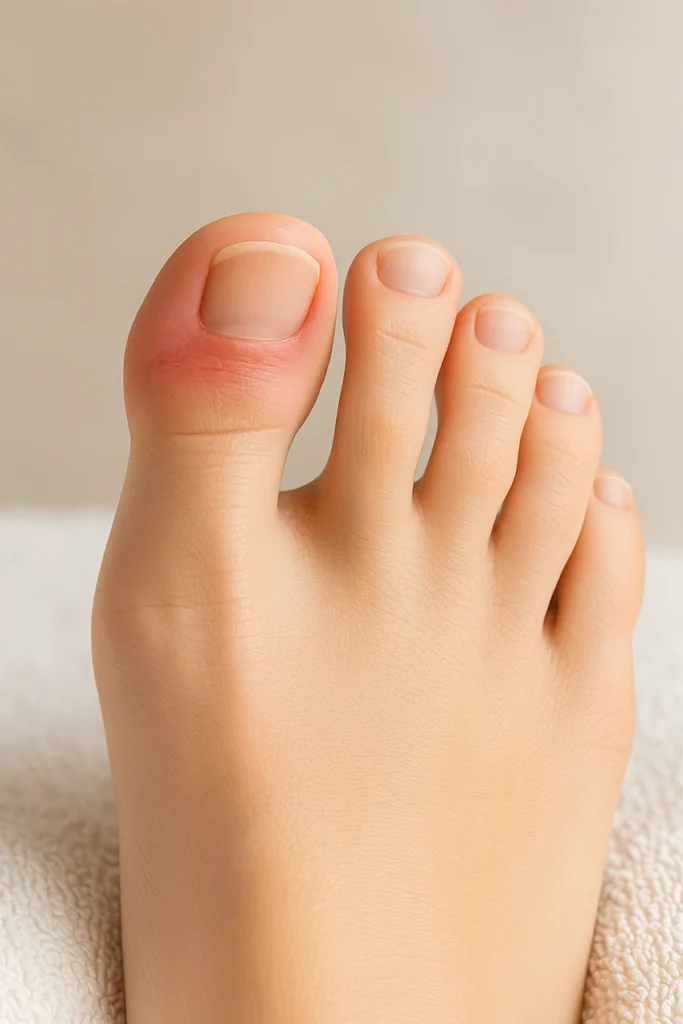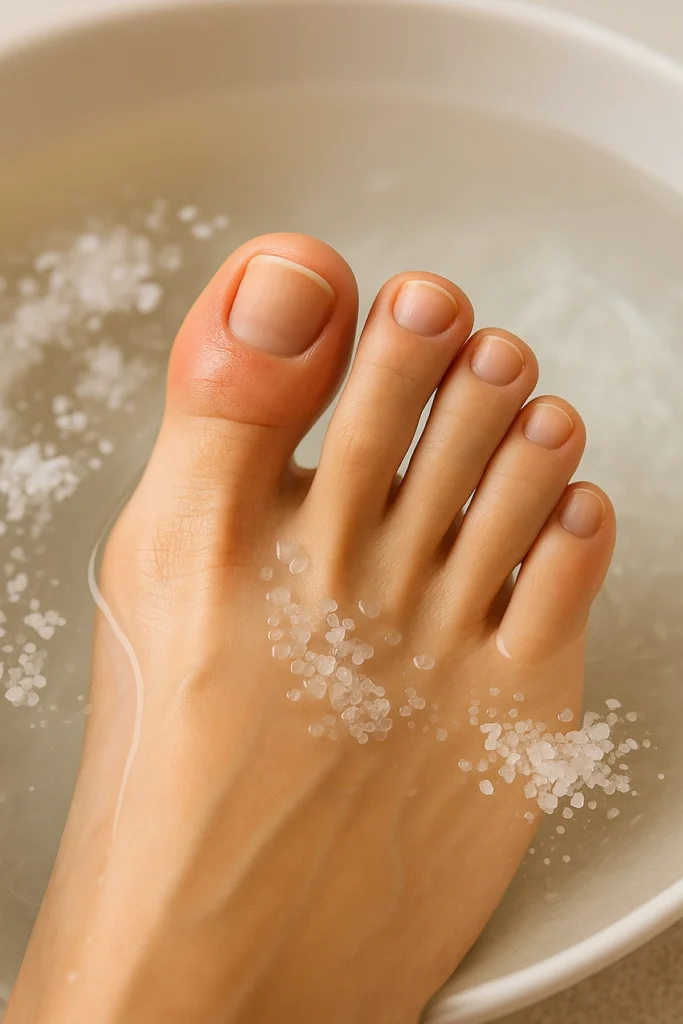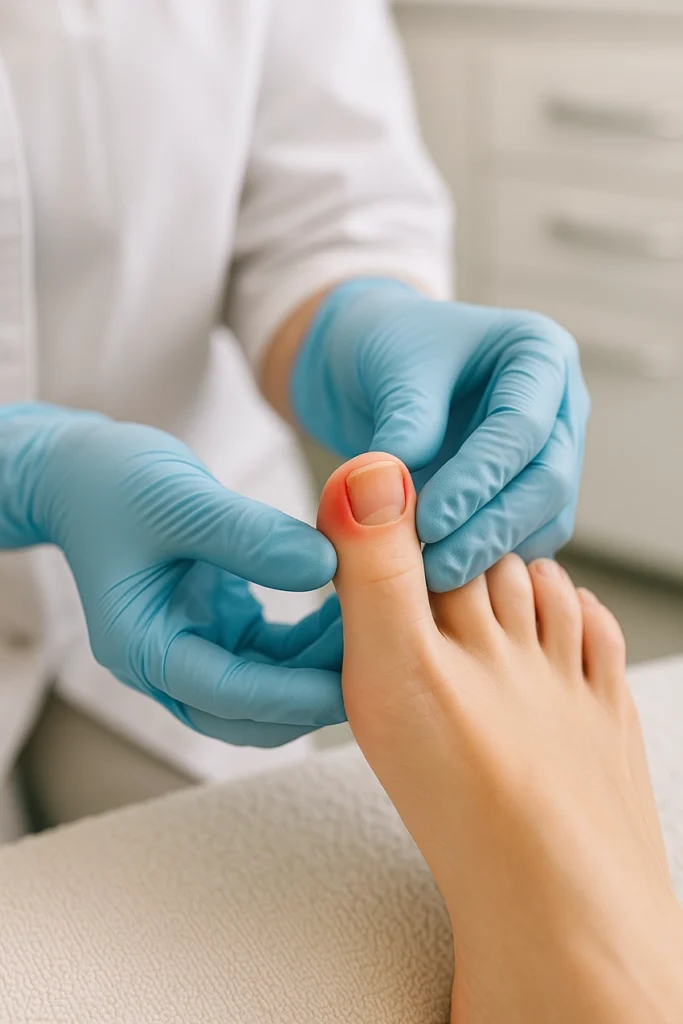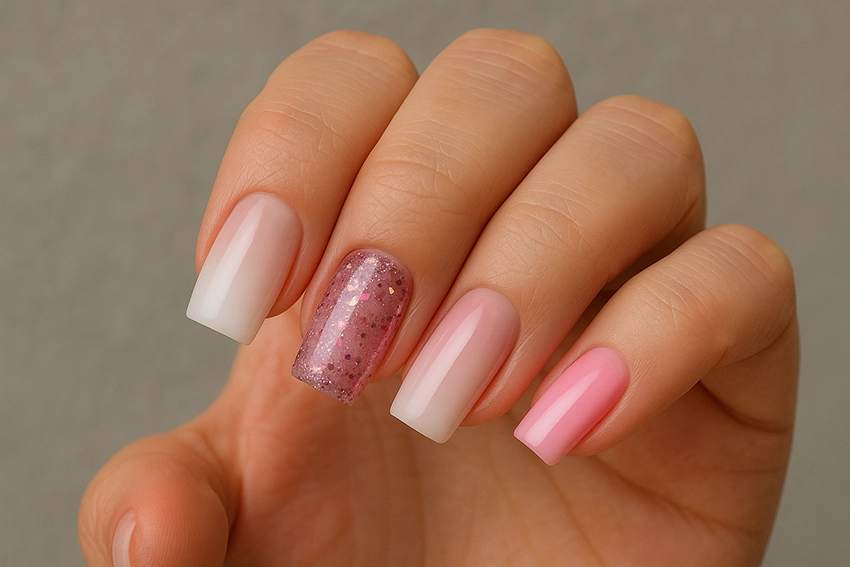Toenail pain is a common problem that can make everyday life uncomfortable. What may seem like a small issue can have a serious impact on walking, sports, and overall comfort. But what causes toenail pain? How can we recognize the different triggers, and when is it time to see a doctor? In this article, we’ll explore the most common causes, symptoms, and treatments to help you better understand and manage this condition.
Why does toenail pain develop?
Toenail pain can have many different causes. It may be the result of an ingrown nail, trauma, or even an infection. Often, everyday habits—such as wearing tight shoes or trimming nails incorrectly—lead to the problem.
The most common causes include:
- Ingrown toenail
- Subungual hematoma (bleeding under the nail)
- Fungal infection
- Skin infection around the nail (paronychia)
- Nail shape abnormalities or previous injuries

Toenail Pain
Ingrown toenail – the most common cause
Ingrown toenails are one of the most frequent reasons for toenail pain. In this case, the edge of the nail grows into the surrounding skin, causing inflammation and sharp pain. Triggers include:
- Wearing tight shoes
- Cutting nails too short or in a curved shape
- Previous nail injury
Symptoms include redness, swelling, tenderness, and sometimes pus formation. Early cases can often be managed at home, but advanced stages may require professional care.
Subungual hematoma – when trauma is to blame
If you stub your toe or if prolonged pressure occurs (for example, during sports), bleeding can form under the nail. This small blood clot causes pressure beneath the nail plate, often leading to intense, throbbing pain. The nail may turn dark purple or black. Minor cases heal on their own, but larger hematomas may need medical treatment.
Fungal nail infection – when nails thicken
Fungal infections are not only cosmetic concerns but can also cause pain in advanced stages. Infected nails become thick, discolored, brittle, and may press on the nail bed. Toenail pain in these cases is often constant, especially when wearing shoes. Treatment involves antifungal medication and proper foot care.

Toenail Pain
Nail fold infection – paronychia
Paronychia, or infection of the skin around the nail, is another painful condition. It occurs when bacteria enter through small skin breaks near the nail. The area becomes red, swollen, warm, and often produces pus. Acute cases appear suddenly, while chronic infections may last for weeks or even months.
Other causes of toenail pain
In rare cases, toenail pain may be caused by congenital nail shape abnormalities. For example, if the nail naturally grows at an angle, it may irritate the nail bed more easily. Chronic illnesses such as diabetes or circulation disorders can also increase the risk of toenail problems.
Symptoms to watch out for
Toenail pain can appear in different forms:
- Burning, throbbing, or stabbing sensations
- Redness and swelling
- Discharge or pus
- Worsening discomfort while walking
If pain persists or worsens, it’s important to seek medical help.

Home care and prevention
Mild toenail pain can often be managed at home:
- Soak feet in warm salt water to reduce inflammation and soften the skin.
- Trim nails properly – always straight across, never too short.
- Wear comfortable, roomy shoes to give toes enough space.
- Disinfect and bandage the area gently to protect it from further irritation.
Prevention starts with good foot hygiene, careful pedicures, and choosing the right footwear.
When to see a doctor?
Do not delay medical attention if:
- Pain doesn’t improve within 2–3 days
- Swelling, warmth, or pus develops
- The nail becomes deformed or discolored
- Symptoms are chronic or recurrent
- You have underlying conditions like diabetes or circulation problems
Early treatment can prevent more serious complications.
Medical treatments for toenail pain
In more severe cases, professionals may recommend:
- Partial or complete nail removal
- Antibiotic or antifungal treatment
- Surgical procedures in advanced infections
- Aftercare and wound care to promote healing
Toenail pain – key takeaways
Most toenail pain is caused by ingrown nails, trauma, or infection. While it often seems mild, untreated problems can lead to serious complications. Proper nail care, wearing comfortable shoes, and being mindful of foot health can prevent many issues. If symptoms don’t improve, it’s always best to consult a professional.
Check out the list to see if you can find anything else you like.





